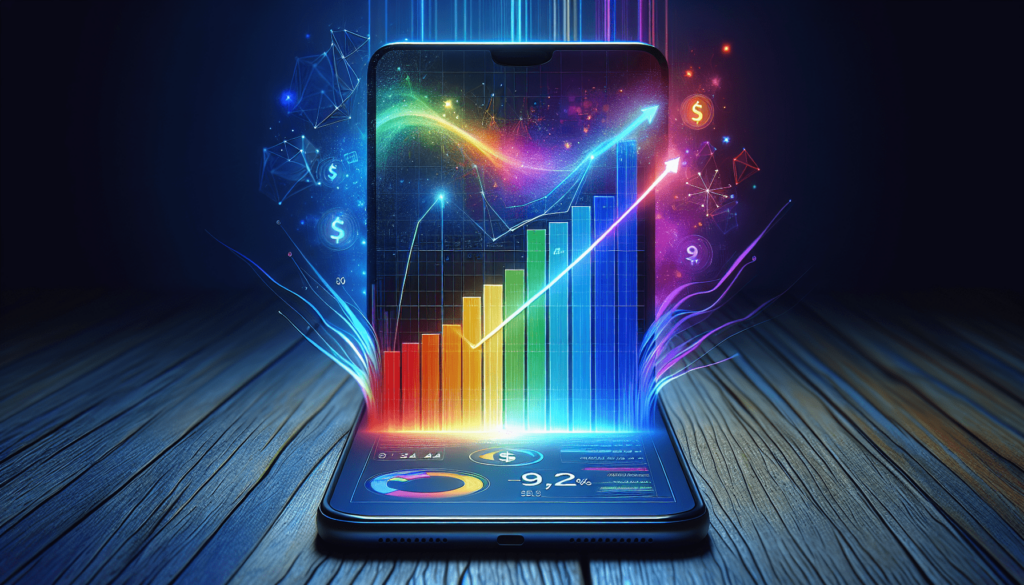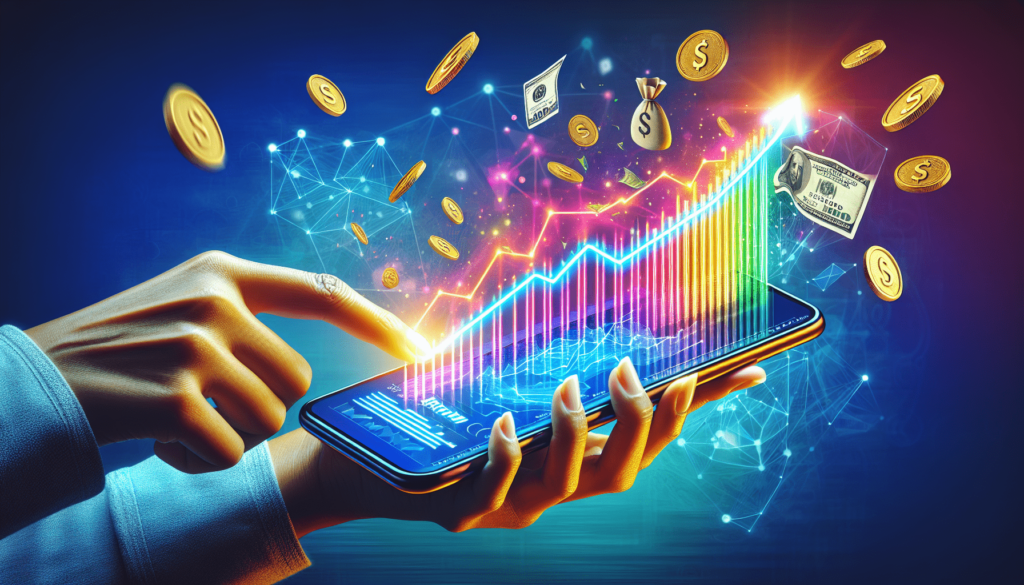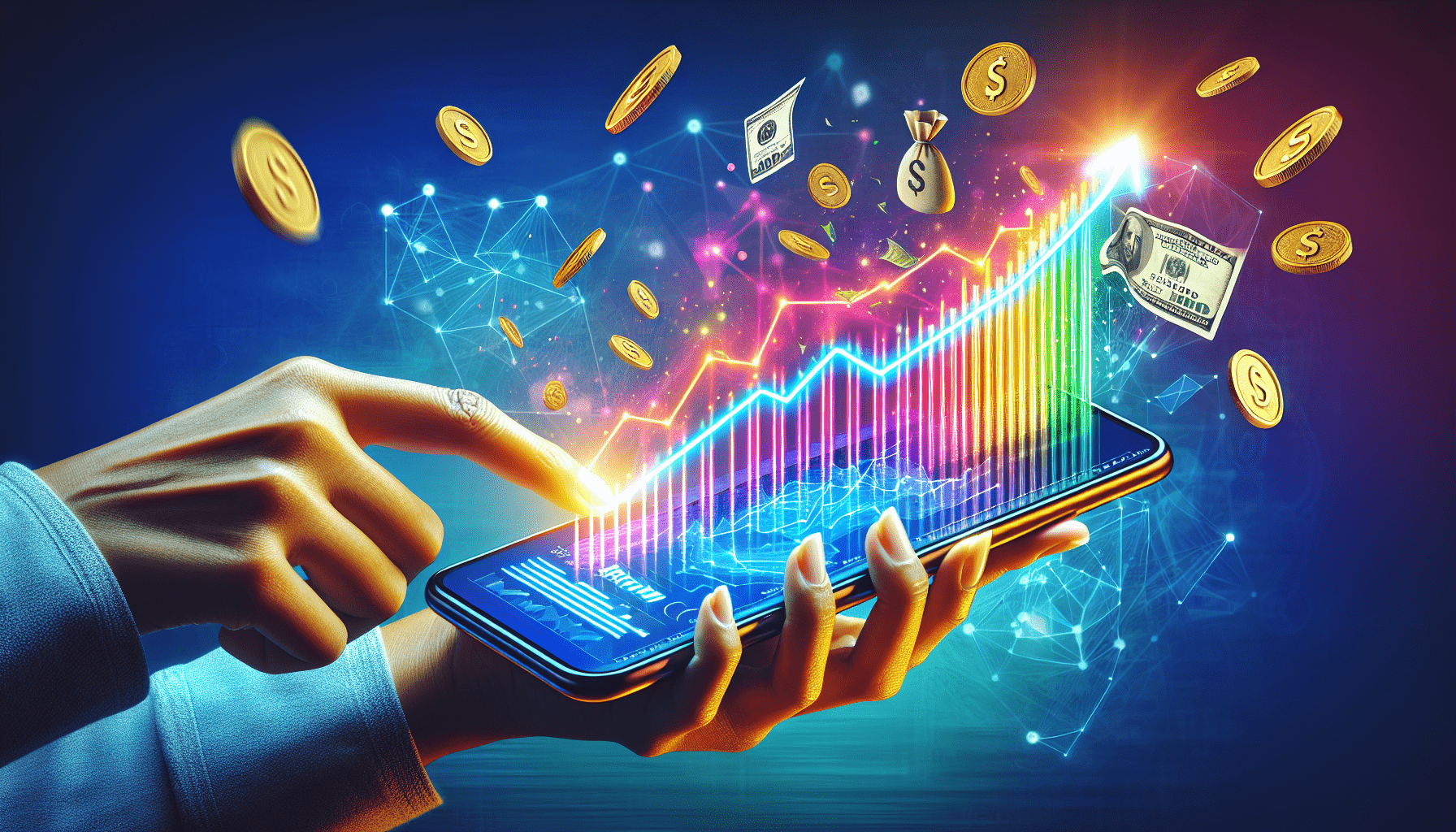In today's fast-paced digital world, the success of a mobile app relies heavily on effective monetization techniques. With millions of apps competing for users' attention, finding the right strategies to generate revenue has become essential. This article explores the various ways developers can turn their app into a profitable venture, from in-app purchases to advertising partnerships. So, if you're a developer looking to capitalize on your mobile app's potential, join us as we unlock the secrets to maximizing your app's success in the ever-growing app market.

Unlock Earning Power: My $7 Mega Link Secret Revealed!
In-App Purchases
Virtual Goods
In-app purchases have become a popular way for app developers to monetize their creations. One common type of in-app purchase is the sale of virtual goods. These are items or enhancements that users can buy within the app to enhance their experience. For example, in a game, users may have the option to purchase special weapons or power-ups that can help them progress faster. By offering these virtual goods for sale, developers can generate revenue and provide users with the option to customize their app experience.
Extra Features
Another way to monetize an app through in-app purchases is by offering extra features. This means that the basic version of the app is free, but users have the option to purchase additional features or functionalities. These could include advanced filters in a photo editing app, additional workout routines in a fitness app, or unlimited access to a music streaming service. By giving users the choice to upgrade to a premium version, developers can generate revenue while still providing a free version of their app.
Subscription Plans
Subscription plans have become increasingly popular as a monetization strategy for mobile apps. With this model, users pay a recurring fee in exchange for access to premium content or features. This can be a weekly, monthly, or yearly subscription, depending on the app and the pricing structure. Some examples of apps that utilize subscription plans include news apps that offer exclusive articles, fitness apps with personalized training programs, or productivity apps with advanced collaboration features. By offering subscription plans, app developers can generate a steady stream of revenue while continuously providing updated content and features to their subscribers.
Advertisements
Banner Ads
Banner ads are a common type of advertisement that can be seen within mobile apps. They usually appear at the top or bottom of the screen and are designed to catch the user's attention without being too intrusive. Banner ads can be static images or animated banners that cycle through different advertisements. By displaying banner ads, app developers can earn revenue through impressions or clicks from users who interact with the ads.
Interstitial Ads
Interstitial ads are full-screen advertisements that appear at natural transition points within an app, such as between levels in a game or before accessing specific content. These ads typically have a higher engagement rate because they cover the entire screen and demand the user's attention. However, they should be strategically placed to avoid disrupting the user experience. App developers can earn revenue from interstitial ads through impressions or clicks, and they often provide higher payouts compared to banner ads due to their larger format.
Native Ads
Native ads are designed to blend seamlessly into the app's user interface, providing a non-intrusive and more natural advertising experience. Unlike banner and interstitial ads, native ads mimic the look and feel of the app's content, making them less obtrusive and more likely to be engaged with by users. These ads can be integrated within lists, feeds, or even as sponsored content. By incorporating native ads into their app, developers can monetize their content while ensuring a more harmonious user experience.
Life-Changing: How a Simple Link Brought Me Financial Freedom!
Freemium Model
Free version with limited features
The freemium model is a popular monetization strategy that offers a free version of the app with limited features. This allows users to try out the app and get a taste of what it offers without having to make a financial commitment. The free version typically includes basic functionalities or access to a limited amount of content. By providing a free version, developers can attract a larger user base and potentially convert some of them into paying customers by offering additional features or premium content through in-app purchases or subscriptions.
Premium version with additional features
In contrast to the free version, the premium version of the app offers additional features or access to exclusive content for a one-time fee or a recurring subscription. This allows users who find value in the app to unlock its full potential by upgrading to the premium version. The premium version may include advanced functionalities, ad-free experiences, or exclusive content that is not available in the free version. By providing a premium version, developers can cater to users who are willing to pay for a more comprehensive app experience.
Sponsorships
Promoting brands within the app
Sponsorships can be an effective way for app developers to generate revenue while also providing value to their users. By partnering with brands, developers can promote those brands within the app. This could involve featuring sponsored content, displaying branded imagery or logos, or even integrating brand-related functionalities within the app. For example, a fitness app may partner with a sports apparel brand and display their products as options for users to purchase. By promoting brands within the app, developers can receive financial support from sponsors while enhancing the user experience.
Partnerships with companies
Similar to promoting brands, app developers can also seek partnerships with companies that align with their app's target audience or niche. These partnerships can involve collaborations in content creation, joint marketing efforts, or even co-development projects. For instance, a travel app may partner with an airline company to provide exclusive discounts or rewards for users who book flights through the app. By forming strategic partnerships, developers can leverage the resources and expertise of other companies while creating mutually beneficial opportunities for both parties.

Daily Payday From Your Couch? Try now for the cost of a cup of coffee!
Affiliate Marketing
Promoting products or services for commission
Affiliate marketing is a monetization technique where app developers promote products or services from third-party companies in exchange for a commission on each sale or lead generated through their app. This can be done by including affiliate links or promotional codes within the app, directing users to the affiliated companies' websites or online stores. For example, a recipe app may feature affiliate links to kitchen supplies or ingredients, earning a commission for every purchase made through the app's referral. By participating in affiliate marketing, app developers can earn revenue without having to directly sell their own products.
Including referral links in the app
Referral links are another form of affiliate marketing that can be utilized by app developers. These links allow app users to invite their friends or connections to download the app or make purchases within the app. When a new user installs the app or makes a purchase using a referral link, the referrer earns a commission or receives some form of reward. This encourages users to share the app with their network, resulting in increased downloads and potentially more revenue for the developer. By including referral links, app developers can tap into the power of word-of-mouth marketing and leverage their existing user base to acquire new users.
Data Monetization
Collecting and selling user data
Data monetization involves collecting user data within the app and selling it to third-party companies. This can include demographic information, user preferences, behavior patterns, and more. By anonymizing and aggregating this data, developers can provide valuable insights and analytics to businesses interested in understanding their target audience better. While data monetization has raised privacy concerns, it can be done ethically by obtaining user consent and ensuring that data is used responsibly and securely. By monetizing data, developers can diversify their revenue streams and provide valuable services to businesses seeking to optimize their marketing strategies.
Offering data analytics services to third parties
In addition to selling user data, app developers can also offer data analytics services to third-party companies. This allows developers to leverage the data they collect within their app to provide detailed reports, insights, and actionable recommendations to businesses. For example, a fitness app may offer data analytics services to fitness equipment manufacturers, helping them understand user trends and preferences related to workout routines or exercise habits. By offering data analytics services, developers can create a mutually beneficial relationship with businesses while generating additional revenue.
Shocking! This one link can pay you time and time again!
Rewarded Ads
Offering incentives in exchange for watching ads
Rewarded ads are a popular monetization technique that offers users incentives in exchange for watching advertisements. These incentives can vary, but they often include in-app currency, extra lives, exclusive content, or other virtual rewards. For example, in a gaming app, users may have the option to watch a video ad to earn extra game coins or skip a challenging level. By providing users with tangible benefits for engaging with ads, developers can increase user retention and ad engagement, ultimately generating revenue from the advertisements displayed.
Unlocking exclusive content or features
Another way to utilize rewarded ads is by offering users the opportunity to unlock exclusive content or features within the app. For instance, a video streaming app may allow users to watch a short video ad to gain access to premium content that is otherwise only available to paying subscribers. By using rewarded ads to grant users access to desirable features or content, developers can create a win-win scenario where users are rewarded for their engagement with ads, and developers can generate revenue while maintaining a positive user experience.
In-App Subscriptions
Weekly, monthly, or yearly subscriptions for premium content
In-app subscriptions have gained popularity as a monetization strategy, particularly for apps that offer premium content or services. With this model, users pay a recurring fee to access exclusive content or enjoy enhanced features within the app. Subscriptions can be offered on a weekly, monthly, or yearly basis, depending on the app and the value it provides. For example, a language learning app may offer different subscription tiers that grant users access to advanced lessons, personalized feedback from tutors, or offline learning capabilities. By offering in-app subscriptions, developers can generate a consistent revenue stream while continuously providing updated and valuable content for their subscribers.
Access to new updates and features
One advantage of in-app subscriptions is that they often include access to new updates and features as they are released. This provides subscribers with a sense of exclusivity and ensures they receive ongoing value for their subscription. Offering early access to new features or beta testing opportunities can also help app developers gather valuable feedback and improve their app based on user input. By tying new updates and features to subscriptions, developers can incentivize users to become subscribers and create a sense of ongoing investment in the app.
Unlock Earning Power: My $7 Mega Link Secret Revealed!
Transaction Fees
Facilitating transactions within the app
Some apps provide a platform for users to complete transactions or make purchases directly within the app. In these cases, developers can monetize the app by charging a percentage or flat fee for each transaction processed. For example, a food delivery app may charge restaurants a commission on each order placed through their platform. By facilitating transactions and acting as an intermediary, app developers can earn revenue while providing a convenient and seamless experience for users and businesses alike.
Charging a percentage for each transaction
Another way to monetize transactions within the app is by charging a percentage fee rather than a flat fee. This model is particularly common in peer-to-peer marketplaces or apps that connect buyers and sellers. For instance, a ride-sharing app may earn a percentage of each fare as a commission for connecting passengers with drivers. By charging a percentage, developers can align their revenue with the value generated by each transaction, creating a fair and scalable monetization model.
Crowdfunding
Allowing users to donate or contribute towards app development
Crowdfunding has emerged as an alternative way for app developers to finance their projects. By allowing users to donate or contribute towards app development, developers can raise funds to cover development costs, marketing expenses, or any other financial needs. Crowdfunding platforms provide a space where developers can showcase their app, explain their vision, and offer rewards or perks to backers. This allows developers to engage with their potential users while securing the necessary funds to bring their app to life.
Offering rewards or perks for different donation levels
To incentivize donations, app developers can offer different rewards or perks based on the contribution level. This can range from early access to the app, exclusive in-app content, or even physical merchandise related to the app. By offering attractive rewards, developers can motivate users to contribute and create a sense of community around the app. Crowdfunding not only provides financial support but also allows developers to build a loyal user base from the outset, ensuring a higher chance of success for the app in the long run.
In conclusion, there are numerous monetization techniques available for app developers to generate revenue from their mobile applications. From in-app purchases and advertisements to freemium models and sponsorships, developers have a range of options to choose from. It's crucial to consider the target audience, the app's niche, and the user experience when selecting the most appropriate monetization strategy. By finding the right balance between revenue generation and user satisfaction, app developers can pave the way for a successful and sustainable mobile app.
Life-Changing: How a Simple Link Brought Me Financial Freedom!

